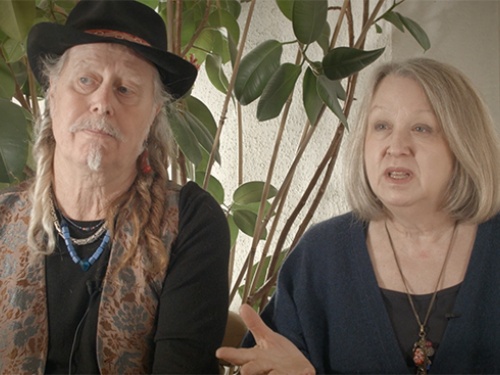Doing It For The Neoliberal Hardware Lulz
Constant Dullaart Wants Your Money
A little over a year ago, we got to know Dutch artist Constant Dullaart when he joined the panel for Do You Follow? Art in Circulation #2, a part of ICA Off-Site: The Old Selfridges Hotel. Primarily known for making art that critiques corporate systems, now he's looking for investors: Dullaart launched DullTech™ this year, a company dedicated to what he calls "a form of radical corporate publishing in an age of high efficiency capitalism". But instead of simply satirsing the aesthetics of bland startup culture, he's actually offering a real product—a device that will play video files on a loop, and sync multiple videos files between different screens—via a Kickstarter campaign. The ICA Bulletin talked to Dullaart in Berlin to find out more.
Tell us about the DullTech™ product: the ears of artists and art technicians have pricked up at the promise of easy video synching, as it's considered a notoriously difficult problem to solve.
First of all, this player is for everyone that doesn’t care about video, and just wants to switch on an artwork without any hassle.
So I made it for lazy collectors, untechnical gallery assistants and so on. And I wanted to create a way of publishing my work as a screensaver on a dedicated device. The whole amazingly crude and simple sync solution was pretty easy in the end. If you need a quick invention that people will enjoy, just look at something that is really annoying in your own life, something I learned from TV shows about inventors. That's what I do all the time, try to fix or avoid annoying things. Within reason of course: I didn’t manage to invent my family out of total anecdotalness. Syncing video was easy compared to that.
I was thinking that not only the solutions and beauty that I come across in my studio should be moulded into awkward commodities. The problems I have in my practice should be utilised similarly. DullTech™ is the tech problem part of my practice, trademarked to live a life of its own, with a dream to one day even function without me - buying me some time and independence from finding tech solutions while installing video, flashing routers, all that. I think the whole thing is just about saving time talking about potential solutions. So the anecdotal video install discussion should be taken care of more swiftly.
The video sync solution ended up being quite easy. It just needs a dedicated box that doesn't need to be able to do everything. The wireless 433Mhz start signal gets all players playing at once, and it only plays the first video file on the USB key.
Just switch the players to listen mode, and one to control mode, and you're done! It does mean you would have to have several DullTech™ media players, and that the Kickstarter makes possible of course. Ah, and we chose a pretty dull solution: there’s only a start signal that makes the players sync. Just make sure the videos are similar in frame rate for the optimum effect.
You’ve dedicated DullTech™ to the dissemination of artwork in tribute to American artist Ray Johnson, who impishly lampooned established pop art modes by using the mail service to distribute his work - also putting into question perceived notions of value. How does DullTech™ seek to comment on the same territory?
Johnson started the New York Correspondence School, and sent his mail art works to the Museum of Modern Art in New York - knowing that the museum archived all correspondence and wouldn’t destroy it, which means his artworks would default into their collection. Seeing that the DullTech™ player caries my work on it as a screensaver, it defaults to a Constant Dullaart artwork when no other video file is playing through a USB key. Meaning that the person or institution that bought the DullTech™ media player—because it is the best and easiest—also just acquired a Constant Dullaart artwork.
The idea of having one artwork playing through the enabling characteristics of another artwork reveals my interest in the utilitarian approach to distribute the absurd. I see it as a buffoonish form of modernism myself. In the end I saw the entire process as an artwork. Researching the best paint for a painting was me going to China finding a factory. And the Kickstarter campaign is the performative aspect of it, creating the identity, begging for financial validation for the art piece. Fighting the urge for efficiency in culture as a Kickstarter.
Artists using crowdfunding have sometimes been crucified by their own communities for perceived abuses of the approach - viz this article by the oft-crucifed Amanda Palmer. Is crowdfunding a valid, even subversive alternative to the traditional artist/gallerist/patron dynamic, or is it another facet of the internet’s drift toward the monetisation of everything?
We are living in times where it seems that any interest in anything can be quantified, and as soon as it’s quantified, it can be translated into money. Sometimes it’s social capital measured in likes and followers, which I responded to in a previous work dealing with Instagram. Or cultural interest in a project through crowdfunding: Dutch cultural funding bodies are starting to seek validation of the projects they subsidized by asking the artists to seek partial funding through crowdfunding organisations. The culture of seeking quantified audience validation is undermining the position of artists being able to comment on society autonomously.
How does this model work for institutional critique, or works that can’t be explained in the preferred two and a half minute pitch video? "Explain the value of your work in this elevator pitch so my uninterested uncle can understand it." In the meantime I am getting emails from Kickstarter to sharpen up my video, to keep tweeting happy tweets, to thank my backers with personal emails, to clarify my project, to pay large sums to get onto mailing lists with guaranteed interested backers and investors. Between my research of starting a company—to which this Kickstarter campaign belongs—and riding the neoliberal snake, this happy corporate optimising bullshit is getting to me.
There were moments I thought I should not make it into an artwork, just try to sell these boxes for more money then they are worth. Go for efficient cultural output that would clearly relate to revenue. Follow all the efficiency tips, hire a PR machine and take all the irony out of it while running to the bank. Just accept my position as a neocolonial creative industry frequent flyer, having fun ideas that other people can solder together so I can buy more cold brew coffee. Hopefully people understand that badgering people over social media is public, socially-accepted begging for validation. And hopefully this project is making this a bit clearer. I’m glad I can do it tongue in cheek, and don’t mind if I won't have to really start this tech company, I mean customer service and all that - I’ll probably upwork that too though. So reality can be fun, and if the Kickstarter makes it, it's real. If it doesn’t, it's not. But if anyone would like to see me do it, wants to support the lulz, you know what to do.
People often ask you if what you do is real. This interviewer wanted to know if you considered the Treasure of Lima exhibition you participated in “real”—you said it very certainly was—and the first and only question in your Kickstarter FAQ is "Is this for real?", to which you give a succinct yes. Could you elaborate on how your practice interrogates the Real, and why anybody would doubt you?
Remember Moby’s track Feeling So Real? I still fucking hate that song. It was released just after my dad had passed away, and I’ve never felt so unreal as listening to that track, as if one can ever feel real. Pure nonsense, wanker, completely destroyed the sense of escapism I associated with early house music. Massive gabber house parties made up for it later so OK. Some people even ask me if my name is real after I showed them my passport; sometimes I even show my father's Proposal of General, Ethical Statement for Natural Scientists.
The only reason why I am an artist is because I want to show that reality really is more moldable than it seems, revealing a sense of hope that life doesn't have to be perceived as detrimentally terrifying as it actually is. I’m no elitist intellectual magician trying to show beauty that is just beyond our puny intellectual reach, alas making absurd new realities really real is my placeholder purpose, like adding a salty caramel sliver of WTF? in between your meals. Lulz.
What’s next for DullTech™? You allude to DullPrint™ and DullSound™ in your advertising copy…
DullPrint is already active in the studio, and we're preparing a tool for printing secret layers hidden in PDFs. But I'm not sure if that will be efficient enough for the market. We did make a dedicated music player, the DullTech™ anti-sleep device, filled with all the sample loops of Apple’s Garageband in shuffle mode—really really annoying—to help keep you awake while driving long nights between exhibitions, or coding towards a deadline. We’re also thinking of making a DullTech™ VPN travel router. Trail lights on highways like the lure in a dog race for the optimum speed suggestion, too much to mention now I guess. Anyway, its all real, and fun. Let’s see if it happens, only a few days left for DullTech™ to live or die... ■
Constant Dullaart's DullTech™ Kickstarter campaign ends Wednesday, 30 September 2015 at 1.37 pm EDT.
This article is posted in: Articles, Interviews, News
Tagged with: interview, Constant Dullaart, Kickstarter, DullTech, Technology, lulz













